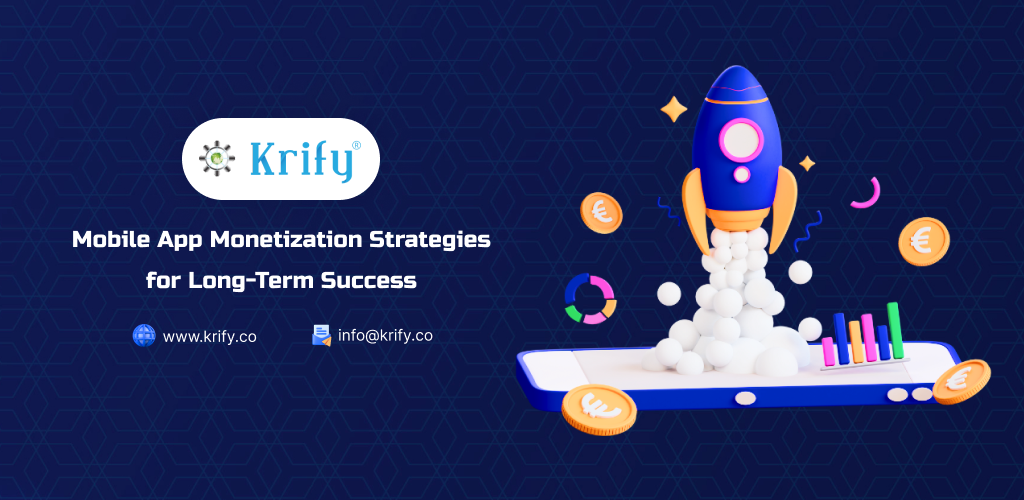Building a mobile app is just the beginning of the journey. To ensure long-term success, you need a smart and sustainable monetization strategy. While short-term revenue can be tempting, it’s essential to think ahead and adopt methods that create value for both users and developers. In this post, we’ll explore the most effective app monetization strategies, so you can maintain steady growth while keeping users engaged.
1. Freemium Model: Balancing Free and Paid Features
Freemium is one of the most popular strategies for app monetization. Here, users get access to basic features for free, while advanced tools or premium content are locked behind a paywall. This method draws users in with no upfront cost, gradually nudging them toward paid upgrades.
For example, apps like Spotify offer free music streaming but limit key features such as offline listening to premium users. With a well-balanced freemium model, you can retain a large user base while driving revenue through premium subscriptions.
Why it works:
– Users experience the value before paying.
– It encourages high engagement and increases conversion rates over time.
2. In-App Advertising: Earn Without Charging Users
In-app ads allow you to generate revenue without requiring users to pay. Displaying banner ads, interstitials, native ads, or rewarded videos can help you create a steady income stream. For instance, many gaming apps allow users to watch short ads in exchange for in-game rewards.
However, moderation is key. Bombarding users with too many ads can frustrate them, leading to uninstalls. Aim to place ads strategically to ensure they enhance the user experience instead of disrupting it.
Pro Tip:
Use targeted advertising to show relevant ads based on user behavior, improving click-through rates and overall ad revenue.
3. In-App Purchases (IAPs): Unlocking Additional Value
In-app purchases offer another way to monetize, especially for gaming, productivity, or lifestyle apps. You can allow users to buy virtual items, extra levels, or premium content directly from the app. Unlike subscriptions, users pay only for what they need.
Games like Clash of Clans have mastered the art of IAPs by selling gems and boosts, driving millions in revenue while maintaining user loyalty.
To succeed with this strategy, ensure your IAPs provide real value and are not essential for core functionality. This way, users don’t feel forced to spend but are happy to do so.
4. Subscription Model: Recurring Revenue for Ongoing Value
Subscriptions generate recurring income by charging users on a monthly or yearly basis. This model works well for apps providing continuous value, such as streaming services, fitness platforms, or news apps.
For example, apps like Netflix and Calm offer ongoing content and updates, encouraging users to maintain their subscriptions. By providing personalized experiences, exclusive content, or regular feature enhancements, apps can keep subscribers engaged and reduce churn rates.
Best Practice:
Offer free trials to let users explore your app before committing to a subscription. This builds trust and boosts conversions.
5. Sponsorships and Partnerships: Build Strategic Collaborations
Sponsorships provide a unique monetization opportunity by collaborating with brands or businesses aligned with your app’s niche. Through these partnerships, you can offer sponsored content, special promotions, or co-branded experiences to users.
For instance, fitness apps might partner with sportswear brands to promote products in exchange for revenue or exclusive deals. This strategy not only generates income but also enhances your app’s credibility by associating with reputable brands.
6. Data Monetization: Generating Insights Responsibly
Data monetization involves using aggregated, anonymous user data to generate insights for third-party companies. Many businesses, such as market research firms, are willing to pay for valuable data to understand consumer behavior trends.
However, transparency is crucial. Inform users about how their data will be used and ensure compliance with privacy regulations like the GDPR or CCPA. Monetizing data responsibly builds trust while unlocking additional revenue streams.
7. Paid Apps: Charge Upfront for Premium Access
Though less common today, charging users to download your app can still be effective, particularly for niche or high-value apps. Users pay once to access all features, removing the need for ads or in-app purchases.
While this model is straightforward, it also presents a higher barrier to entry. To succeed with paid apps, you must deliver exceptional value that justifies the price and use clear messaging to communicate this to potential customers.
8. Hybrid Model: Combine Multiple Monetization Methods
Sometimes, the best strategy involves using a combination of the above methods. For example, a gaming app might use a freemium model while incorporating ads and offering in-app purchases. Similarly, a content app could blend subscriptions with occasional sponsored content.
A hybrid approach helps you diversify your revenue sources and reduce reliance on a single stream. This flexibility allows you to adapt to changing market conditions and user preferences over time.
Conclusion: Focus on Sustainability, Not Just Profit
Selecting the right monetization strategy is crucial for the long-term success of your app. While earning revenue is essential, user satisfaction should remain your top priority. A sustainable strategy builds trust and keeps users coming back, ensuring steady growth over time.
Whether you choose freemium, subscriptions, in-app purchases, or a hybrid model, the key lies in understanding your audience and delivering value consistently. As trends and technologies evolve, don’t hesitate to experiment, analyze, and refine your approach. With the right strategy in place, your mobile app can thrive for years to come.
At Krify, we specialize in crafting mobile solutions with effective monetization strategies tailored to your business goals.
Similar Blogs
Monetization strategies for your Mobile Apps
Why Businesses should invest in Mobile App monetization strategies?



